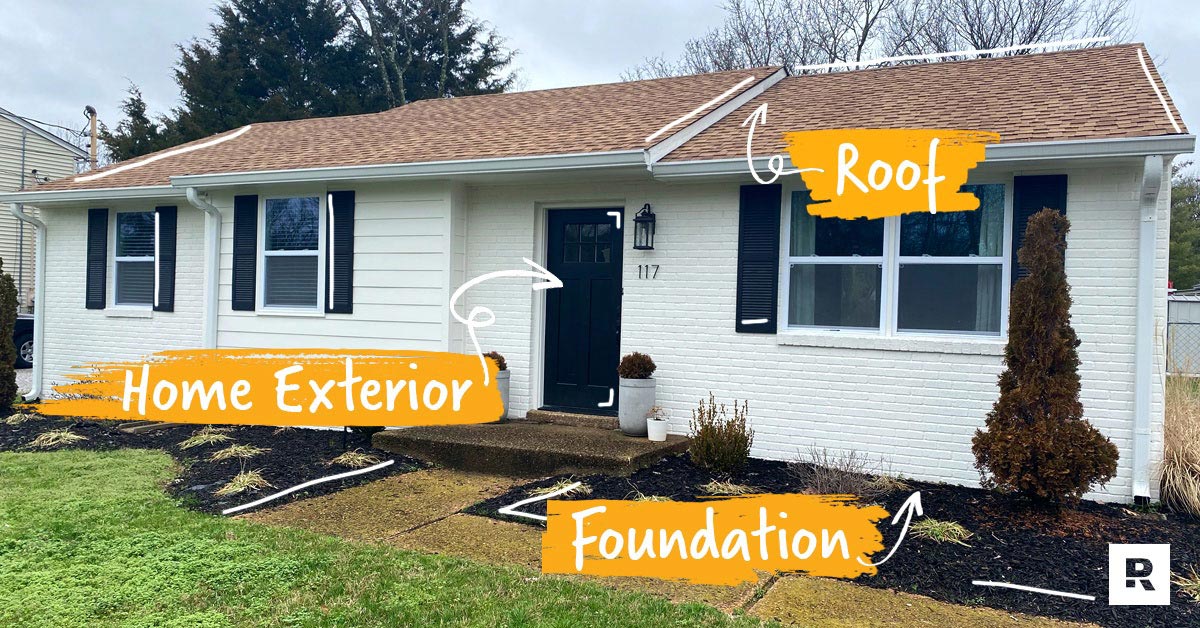When touring a house, examine its structural integrity and layout efficiency. Check the condition of crucial systems like plumbing and electrical.
Touring a house is a significant step towards finding your dream home. As you navigate through potential properties, a meticulously observant eye is essential. Focus on details that impact livability, maintenance, and future resale value. It’s not just about the visual appeal; it’s about recognizing the signs of a well-maintained home or identifying issues that could become costly repairs.
From the initial glance at the curb appeal to the investigation of spaces not immediately visible, such as the basement or attic, every aspect holds weight in your decision. Your tour is the best opportunity to assess the home’s functionality, imagine your life unfolding within its walls, and make an informed decision.
Introduction To House Touring
Embarking on the journey to find your perfect home can be both thrilling and daunting. Taking the right steps during a house tour can steer your decision-making process. This post will guide you through what to look for as you walk through potential new homes.
Understanding The Purpose Of A Home Tour
Home tours are not just about love at first sight. They allow for a deeper dive into the property’s condition and fit for your lifestyle. It’s your chance to envision your life in a new space and scrutinize details that photos can’t capture.
Preparing For Your House Inspection Visit
Before you step foot into a prospective home, preparation is key. Here’s a checklist to ensure you’re ready:
- Bring a notepad or digital device for notes.
- Have a list of questions prepared for the seller or agent.
- Review the property listing for any listed features you want to check.
- Don’t forget your tape measure for room sizes.
A well-prepped tour helps you capture necessary details to make an informed decision.

Credit: www.ramseysolutions.com
Exterior Inspection Checklist
Welcome to your vital first step in finding your dream home: the Exterior Inspection Checklist. Before stepping inside, take in the full picture. A thorough exterior evaluation can reveal a lot about a property’s upkeep and potential hidden costs. Let’s walk through the key elements to focus on during your tour.
Assessing Curb Appeal And Exterior Condition
Curb appeal isn’t just for aesthetic pleasure—it hints at the property’s maintenance. Scan the exterior walls for cracks, peelings, or signs of neglect. Notice the windows and doors; they should be in good shape without obvious damages.
Roof And Gutter Evaluation
Roofs shelter your future home, so check them meticulously. Look for missing, damaged, or aged shingles. Ensure gutters and downspouts are intact, secured, and free of debris. A compromised gutter system could cause water issues.
Checking The Foundation And Driveway
A strong foundation supports a stable home. Look for cracks or shifts in the foundation. Examine the driveway for potholes or cracks that could reflect soil movement or poor drainage around the house.
Inspecting Outdoor Structures And Landscaping
Last, turn to the property’s extras: sheds, decks, and patios. These should be in good repair. Take note of the landscaping. Well-kept grounds can mean attentive care to the property as a whole.
Interior Inspection Essentials
Embarking on a house tour can be thrilling, yet it’s crucial to keep a keen eye on details. The interior of a property reveals much about its overall condition and livability. Let’s delve into the essential aspects of an interior inspection to ensure you’re fully informed before making a decision.
Evaluating The Overall Layout And Room Sizes
A well-designed layout makes a house feel like home. Here are key points to consider:
- Space Efficiency: Does the layout make good use of available space?
- Flow between Rooms: Is it easy to move around? Are the hallways and doorways adequately sized?
- Room Proportions: Are the rooms spacious enough for your needs? Will your furniture fit?
Condition Of Walls, Floors, And Ceilings
These surfaces can indicate how well a house has been maintained:
- Cracks and Patches: Look closely for signs of repairs or structural issues.
- Finish and Quality: Assess the paint, wallpaper, and floor materials for durability and aesthetics.
- Cleanliness: Observe if the surfaces are clean and well-kept; this often reflects the overall care of the house.
Checking Windows, Doors, And Electrical Outlets
Functional windows, doors, and electrical systems are key for comfort and safety:
| Feature | Items to Check |
|---|---|
| Windows | Ease of opening, signs of damage, and quality of seals. |
| Doors | Stability, locking mechanisms, and insulation. |
| Outlets | Number per room, convenience, and safety features. |
Identifying Signs Of Moisture Or Water Damage
Water damage can spell trouble; stay vigilant for these indicators:
- Discoloration: Yellow or brown spots on walls or ceilings are red flags.
- Odor: A musty smell often signifies hidden moisture issues.
- Mold Presence: Visible mold growth can be a health hazard and indicates moisture problems.
Systems And Functionality
Inspecting systems and functionality ranks high on the home touring checklist. A house’s comfort, safety, and long-term affordability hinge on these aspects. Ensure a thorough walk-through covers Heating, Ventilation, and Air Conditioning (HVAC); plumbing; electrical; and security systems to gauge their performance and upkeep requirements.
Testing Heating, Ventilation, And Air Conditioning (hvac)
A reliable HVAC system maintains comfortable temperatures year-round. Check the age of the system and ask for maintenance records. Listen for unusual noises and note any odd smells when testing. Don’t forget to confirm if the thermostat is in working order.
Plumbing Systems And Water Pressure
Efficient plumbing is non-negotiable. Turn on faucets to evaluate water pressure and temperature. Flush toilets to assess tank refilling times. Look under sinks and inspect pipes for any signs of current or past leaks. Clear, taste- and odor-free water is a must.
Electrical System And Appliance Checks
Electrical safety is paramount. Test all light switches and power outlets. Ensure the electrical panel is labeled and free from rust or damage. If appliances are included, turn them on to ensure they operate correctly. A quick inspection can reveal potential electrical issues.
Security Features And Safety Alarms
Effective security measures protect against intruders and hazards. Check for sturdy locks on doors and windows. Test smoke and carbon monoxide detectors. Note the presence of a security system or motion-sensor lights. Peace of mind comes with knowing these features function properly.
Beyond The Basics: Additional Considerations
Delve deeper into your home tours by assessing aspects often overlooked, such as the clarity of property boundaries and the condition of sewer lines. Explore the neighborhood carefully, noting the proximity of essential services and traffic patterns, to ensure your potential new home meets all your lifestyle needs.
When touring a house, it’s easy to get caught up in the visual appeal and the main features. Yet, a smart buyer will dive deeper. This section will cover key elements often overlooked but crucial to making an informed decision. Inspecting attics and basements, understanding storage options, checking connectivity, and learning about the neighborhood are all vital steps.
Attic And Basement Inspection Points
Attics and basements reveal much about a house’s integrity. Look for signs of water damage or leaks, as these can indicate roofing or foundational issues. Insulation quality also warrants attention; it impacts energy efficiency and indoor comfort. Finally, check for adequate ventilation and any signs of pests or mold.
Assessing Storage And Closet Space
Storage space is a must for a clutter-free home. Consider not just the quantity but the functionality of closets and storage areas. Are shelves adjustable? Is there enough room for large items? Use a simple checklist to evaluate storage:
- Number of closets per room
- Walk-in closet dimensions
- Pantry and linen closet utility
- Garage or shed storage capacity
Internet Connectivity And Cell Signal
| Room | Cell Signal Strength | Wi-Fi Speed (Mbps) |
|---|---|---|
| Living Room | Good | 50 |
| Bedroom 1 | Fair | 30 |
| Kitchen | Excellent | 60 |
Reliable internet and cell coverage are daily essentials. Tour each room and test the signal. Ask about the local internet service providers (ISPs) and the available plans. Check cell reception near windows and outside the house as well.
Understanding The Neighborhood And Location
Location matters in real estate. Get a feel for the neighborhood by exploring the area. Are parks and schools within walking distance? What’s traffic like during peak hours? Assess convenience factors like proximity to grocery stores, hospitals, and public transport. Note the overall noise level and safety during different times of the day.
Remember, a thorough inspection ensures your new house feels like a true home. Keep these additional considerations in mind when touring to make a confident choice.
.png)
Credit: madisontaylorindoorenvironmental.com
Post-tour Evaluation And Decision Making
Once the house tour concludes, a vital phase begins. Evaluating the house properly is crucial before making a big decision. This process includes reviewing inspection notes, seeking expert opinions, and considering next steps.
Compiling Inspection Notes And Potential Concerns
Reflect on your tour with a critical eye. Create a list of observations and potential issues. Below are key points to consider:
- Structural integrity: Look for large cracks or uneven floors.
- Age of systems: Note the condition of the HVAC, plumbing, and electrical systems.
- Water damage: Check for stains on ceilings or around windows.
- Roof condition: Look for missing tiles or signs of leakage.
Summarize these points for easy reference. This summary guides the consultation with a home inspector.
Consulting With A Home Inspector For Expert Analysis
Always engage a qualified home inspector. They offer professional insight into the house’s condition. Here’s what to do:
- Schedule an inspection promptly.
- Ensure the inspector’s credentials are verified.
- Attend the inspection to learn directly about concerns.
- Request a detailed report to review.
An inspector’s feedback is invaluable. It can influence the offer or decision to proceed.
Making An Informed Decision And Next Steps
- Weigh the pros and cons: Balance positive aspects with potential issues.
- Consider budget implications: Include repair costs in your financial plan.
- Think long-term: Assess if the house meets future needs.
If the house feels right, consult with a real estate agent to discuss an offer. Remember, a thorough evaluation leads to a confident choice.

Credit: www.realestatemortgageblog.com
Frequently Asked Questions For What To Look For When Touring A House
What Not To Do When Touring A House?
Avoid touching personal items, refrain from taking photos without permission, resist making negative comments, don’t use the bathroom facilities, and make sure not to linger too long after viewing.
What To Look For When Visiting A Home?
Check the home’s structural integrity, signs of damp or mold, and the condition of roofs and foundations. Evaluate the plumbing, electrical systems, and windows for functionality. Assess the neighborhood, local amenities, and potential noise levels. Ensure adequate storage space and room sizes meet your needs.
What To Ask And Look For When Viewing A House?
Ask about the property’s age, recent renovations, and included appliances. Check for signs of dampness, structural issues, and storage space. Assess the neighborhood’s safety, amenities, and noise levels. Inquire about utility costs, property taxes, and homeowner association fees.
What Are The Top 5 Things To Look For When Buying A House?
Consider location relevance to work, schools, and amenities. Assess the house’s condition and potential repair costs. Review the neighborhood’s safety and property values. Ensure the size and layout match your living needs. Validate the property’s resale potential and market trends.
Conclusion
As you wrap up your house tour, prioritize your needs and deal-breakers. Reflect on the home’s atmospheric and structural details, contrasting them with your wish list. Remember, a diligent eye now can lead to a cherished home for years to come.
Embrace the journey to your perfect living space.

